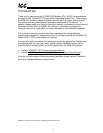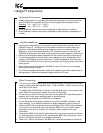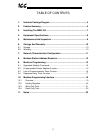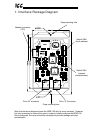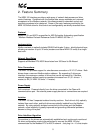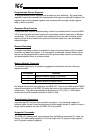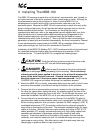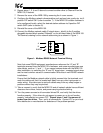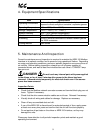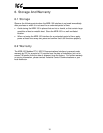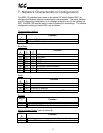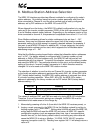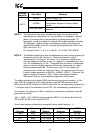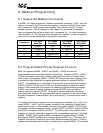
5
2. Feature Summary
The MDB-100 interface provides a wide array of network data access and drive
control features. Combined with the flexible data access methods and universal
acceptance of the Modbus network, this allows powerful networked control and
monitoring systems to be designed. Some of the main features provided by the
MDB-100 which allow for this control and configurability are briefly described here:
Protocol
Modbus RTU and ASCII as specified in AEG Schneider Automation specification
“Modicon Modbus Protocol Reference Guide PI-MBUS-300 Rev. J”.
Implementation
Modbus network is optically isolated RS485 half-duplex 2-wire + shield physical layer,
allowing connection of up to 32 units (masters and slave MDB-100 units) to a single
bus trunk.
Network Baud Rates
Supports all Modbus RTU/ASCII baud rates from 300 baud to 38.4kbaud.
Drive Connections
The MDB-100 provides support for simultaneous connection of 2 VF-S7 drives. Both
drives share a common Modbus station address. By supporting 2 drives per
interface, the maximum number of drives that can be connected to 1 Modbus
network segment without requiring repeaters increases from 31 (31 drives + 1
master) to 62 (31 MDB-100 units + 1 master).
Power Supply
Self-contained. Powered directly from the drive connected to the Channel A
communications port. No external power supply devices or connections are required.
Isolation
The MDB-100 has 3 separate isolated circuitry sections. Each drive is fully optically
isolated from each other, and both drives are optically isolated from the Modbus
network. By using optically isolated connections to the drives and the Modbus
network, noise immunity is greatly improved and grounding differential problems
become a thing of the past.
Drive AutoScan Algorithm
Connections to the drives are automatically established and continuously monitored.
No drive configuration needs to be performed to connect the MDB-100 and
communicate via the Modbus RTU or ASCII network. Just plug it in – it’s that simple.




